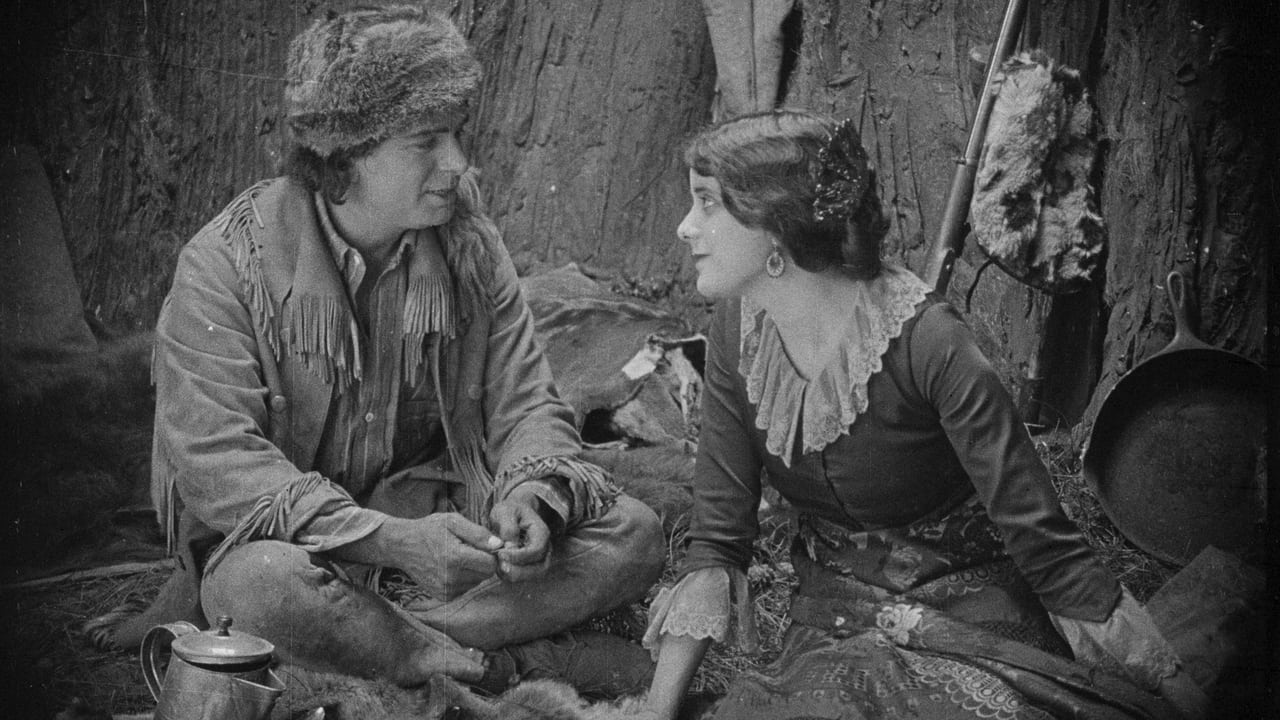

While Douglas Fairbanks is famous for his fantasy and adventure films (such as THE THIEF OF BAGDAD, ROBIN HOOD and THE MARK OF ZORRO), he also made a variety of other films...including some westerns early in his film career. TCM showed two of them tonight, THE GOOD BAD MAN and THE HALF-BREED. Both are about equally enjoyable, though THE HALF- BREED is exciting to watch because of its location filming in Boulder Creek (near San Jose) and Calaveras County (near Yosemite). Seeing all these giant redwoods is reason enough to see the movie!When the film begins, a native woman has a baby and has been dumped by the father of the child. She is friendless and neither the whites nor Indians want anything to do with her. She then gives her baby to a nice old naturalist living in the woods then she kills herself! So the child is raised away from civilization by the old man. When the old guy dies, the now grown Sleeping Water (Fairbanks) travels to the nearby town and learns that pretty much most of the white folks he meets are Indian-hating scum. He decides to leave and return to the woods and is soon joined by Teresa, a woman who has stabbed two perverts who couldn't keep their hands off her. Additionally, Nellie from town inexplicably has fallen for Sleeping Water...as has Teresa. What's next? See the film.While this is not a great film, it does do a nice job of humanizing the main character and the plot all centers on how trashy the 'civilized' white folks could be. In many ways, this is like a great silent western, THE SQUAW MAN...which is a must-see. As for THE HALF-BREED, it's very good for when it was made and ages reasonably well. Sadly, the film was restored by piecing together many different prints and some of them are pretty shabby condition- wise.
... View MoreThe Half-Breed (1916)*** (out of 4)A young Indian woman brings her newborn son to the home of a white man where she drops it off and shortly later kills herself. The baby, part white and part Indian, grows up to live a normal life but when his caretaker dies, the townspeople run him out. Soon he sees various racial injustice and pretty soon finds himself in the woods with another outcast.THE HALF-BREED isn't the greatest film ever made but it's certainly an entertaining one that fans of silent cinema should enjoy. Douglas Fairbanks plays the title character and does a very good job with the role. Obviously the actor is very energetic but he manages to handle the small, quiet scenes just as well as any of the stuff that has him running around. The actor was very believable as the somewhat naive man who doesn't realize that people will hate him just because of his skin color.The film's story isn't all that original and deals with the half-breed going up against a sheriff who just happens to be his real father, although neither one realizes it. The film features some terrific visuals and especially the scenes in the forest. There's a terrific climax where a fire breaks out and the movie ends on a very poetic note. The main reason to watch this film is certainly for Fairbanks and you have to wonder what his female fans in 1916 thought about his nearly nude entrance at the start of the picture.
... View MoreThe usual suspects -- star Doug Fairbanks, writers Anita Loos and John Emerson and director Allan Dwan -- try something different from their usual light-hearted romp with social commentary, working from a story by Bret Harte.Unfortunately, the copy screened by the Museum of Modern Art is in poor shape. Only about twenty-five minutes of the one-hour feature could be screened, and the print showed a lot of damage. The titles, when possessed of any humor, are dour and there isn't much of Doug's usual stuntwork -- he clambers around the redwood forests of northern California for a bit and bends a young conifer double a couple of times to spring from one place to another. We do get a bit of beefcake in an early scene, where he is shown, stripped to the waist, but that's about it.The rest is an open attack on racism. Doug, the titular half-breed is trapped in a small, nasty town full of racists who dislike him solely because he is an Indian. Of course, Jewel Carmen and Alma Rubens have yens for him, but besides showing jealousy when Doug is not present, do nothing about it. The genially corrupt individuals who inhabit most of Harte's better known works are not present. Instead, they are selfish, nasty and smug It's difficult to judge the impact of this movie almost a hundred years after it was produced, but over all it looks like an earnest work with some good production values: an attempt to expand Doug's range as a movie star. Judging by the fact that he went back to his usual mode of movie until 1920s' THE MARK OF ZORRO, it almost certainly didn't take. Nor, judging by what remains, should it have.
... View MoreThis wonderful early silent by pioneering director Allan Dwan shows him in full mastery of film style -- excellent use of landscape, of close-ups, of action montage. The performances are all good, especially Alma Reubens as the woman who loves Fairbanks but thinks she'll never get him. A very fine script by Anita Loos. Well worth seeing -- and now you can because the film has been restored.
... View More